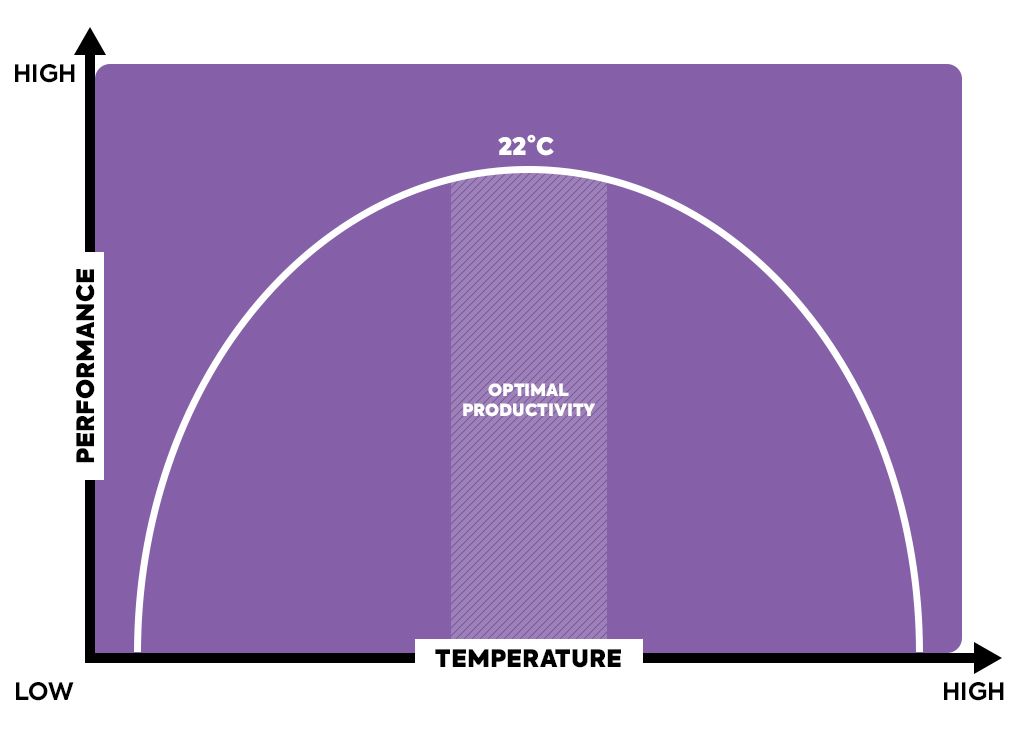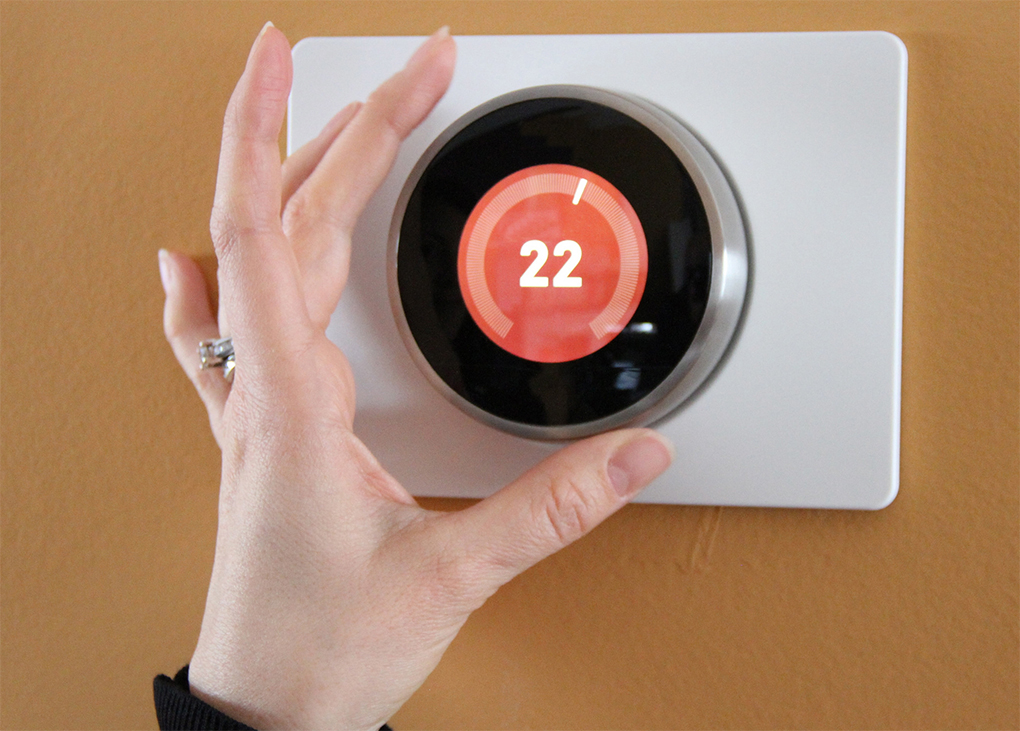A new Australian study is taking on the long-held debate: is your office’s 22°C thermostat really set at the correct temperature?
Around the world, 22°C has become standard practice. For workers, it’s believed to be the optimal temperature for productivity – a claim backed by ASHRAE and REHVA.
Not so, says a team from South East Queensland’s Griffith University.
“Currently, the accepted wisdom in the HVAC and buildings sectors regarding the effect of thermal environment on performance and productivity fits the inverted-U model, rooted in arousal theory,” says paper author Dr. Fan Zhang, a lecturer in architectural science at the Griffith School of Engineering and the Built Environment.
Zhang led researchers from the School of Engineering and Built Environment and from the Cities Research Institute in conducting a review of 300 pieces of scientific studies, spanning disciplines. They found no evidence supporting the 22°C performance claim.
“The REHVA and ASHRAE are using the inverted–U relationship to justify the prescription of a narrow range of indoor temperatures at enormous expense of HVAC equipment, building operational energy and most importantly, greenhouse gas emissions,” she says. “It is all couched in terms of ‘safeguarding’ optimum work performance and productivity.
“Having read the human performance literature outside the building science domain, we have come to the realisation that the inverted-U is an overly simplistic and methodologically flawed proposition, fundamentally incongruent with known physiological and psychological effects.”
U models
Researchers examined two conceptual models relating to temperature effects and cognitive performance: the inverted-U model and extended-U model.
Inverted-U model
Created by psychologists Robert Yerkes and John Dodson in 1908, the inverted-U model shows the relationship between performance and pressure. It indicates that peak performance happens when people face a moderate amount of pressure. Too little or too much pressure sees a decrease in productivity.
The aim, then, is to have people at the middle of the inverted-U – neither bored nor stressed.
The same can be applied to temperatures, it has been argued, with 22°C sitting at the top of the inverted-U.

“Although the inverted-U relationship has held sway in the indoor environment research literature and practice, many researchers have criticized its overly simplistic concept and methodologically flawed empirical bases,” says Zhang. “The inverted-U model assumes that thermal environment and thermal stress directly determine the task performers’ cognitive efficiency, regardless of other factors, and this reduces to a dose-response relationship – 22 °C results in maximal performance. However, this assumption oversimplifies the complex, dynamic and integrated ‘internal’ mechanisms of human response to environmental stimuli.
“It is implausible to characterise the human body as a simple linear transducer of environmentally imposed loads, as the inverted-U function does.”
Extended-U model
Researchers also looked at the extend-U model as a means of calculating a preferred office thermostat temperature.
The extended-U model is an adaptation of the inverted-U model, published in 1989 by P.A. Hancock and J.S. Warm. Here, a range is accounted for in both psychological and physiological adaptability to a situation.
With the extended-U, the boundaries of acceptable ranges can depend on several factors such as the type of task, the demands of the task, worker skill and motivation, and more.

The 22°C thermostat
“The remarkable adaptability of our species enables us to absorb a range of externally imposed demands without any discernible decrement in performance, which means that human performance remains relatively stable across a broad range of acceptable temperatures, but it rapidly deteriorates at the boundaries of thermal acceptability,” says Zhang.
The researchers argue that this means the inverted-U model – as prescribed by ASHRAE and REHVA – should be less favoured than the extended-U model.
They found that despite the prevailing preference for the inverted-U model, there is no actual single optimum temperature. Instead, human response was more aligned to an extended-U. Previous research, also from Griffith University, similarly found that workers performed just the same at 25°C.
“Human performance is affected by many factors, and temperature is only one of them,” says Zhang. “There has been no research evidence showing that at any temperature people will all perform the same way.”
The ideal range
The study suggests that instead of sticking to a rigid 22°C, anywhere between 23–26°C is the safe summer temperature range for western developed countries.
“Indoor thermal environments can be controlled much less stringently than is currently practised,” says Zhang. “Heating setpoints should align with the lower boundary of the comfort zone, and likewise cooling setpoint should align with the comfort zone’s upper boundary.”
They argue that this could substantially reduce energy use.
“HVAC energy now accounts for 40 to 50 per cent of commercial properties’ energy use and is proportional to the differential between internal and external temperatures,” says Zhang. “Facility managers and building service engineers should recognise that indoor temperatures spanning the full range of thermal acceptability are serviceable instead of blindly pursuing a speciously defined single-temperature optimum.”
The study – Effects of moderate thermal environments on cognitive performance: A multidisciplinary review – was published last month in Applied Energy.
Header photo adapted from an original by Dave Dodge, Green Energy Futures (Flickr)
 Mark Vender
Mark Vender


Leave a Reply to kapam Cancel reply